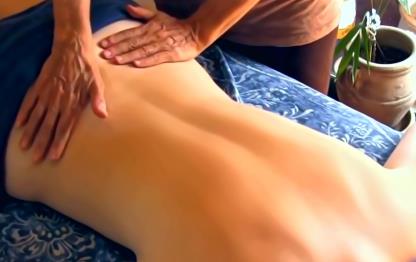Can we help you?
Contact us

Can we help you?
Contact us

Thank you for contacting us
Your form has been submitted successfully Our team will contact you again as soon as possible.
Whooppss...!! An error has occurred
Try sending later or write an email directly to areaempresas@ua.es

 PATENTED TECHNOLOGY
PATENTED TECHNOLOGY
INFO
SHEET
DOWNLOAD
EXECUTIVE
ABSTRACT
CONTACT DETAILS: Research Results Transfer Office-OTRI
University of Alicante
Tel.: +34 96 590 99 59
Email: areaempresas@ua.es
http://innoua.ua.es
A device to control the position and movement of the lumbar spine has been developed. This device measures the degree of lumbar spine and trunk rotation as well as changes in position or while performing any type of physical activity.
The device is patented and potential partners to license the technology or develop end products based on this technology are sought.

Low back pains are one of the most common health problems in modern society. This pain leads to disabilities and to a high use of health systems.
Therapies using exercises (based on stabilisation or enhancement of body trunk) are key factors in prevention and rehabilitation processes.
Lumbar spine control is difficult because of the global and multiplanar movements.
Last year several devices for lumbar spine control have been developed. These are mechanic and electronic devices with pressure sensors that are very interesting but have important disadvantages as: inability to show curvature changes, rotation and steepness changes, some of them need a supporting point, etc.
A research team of the University of Alicante has developed a device consisting of a belt which is made of an elastic band. In its central part there are five connected sensors, corresponding to the lumbar vertebrae and twos sensors on the band sides corresponding to the back end of the body trunk. The sensors are connected to a common electronic system, including each sensor a gyroscope and an accelerometer.
Grosso modo and as it can be seen in the images there are five sensors in the center part (7) and two sensors in the sides (6 and 8). On one hand, changes in lumbar spine bend will be registered by the sensors located on the lumbar vertebrae and the sacrum.
On the other hand, changes in the inclination and rotation will be mainly regis-tered my side sensors (6 and 8).

Fig. 1. Belt design for controlling position and movement

The covering box (13) includes all the electronics needed for the good performance of the sensors. There are four sub-systems: control, base system, communication and power system (rechargeable and removable battery). There are some switches like ON/OFF, USB connector (power charge and communications), LEDs, etc.

Fig.3
Fig.4
It is a must to calculate angles for using data obtained from accelerometry. The system needs to distinguish among flexo-extension movements (as it can be seen in Fig. 4) in relation to different angles of lumbar spine, derived from those from the pelvis (Fig. 3).
With this purpose, the device is calibrated in order to know the relative and absolute deviation and angles. This, allows the assessment of the participation of each sensor in the final lumbar spine curve.
Variations in rotation (Fig. 6) and in slope (Fig. 5) are calculated with more accuracy because of the back sensors. These sensors are able to detect changes in the body trunk as well as in the lumbar spine (central sensors). It helps with possible assymetries in the position of the trunk.
In order to have a good feedback of the data registered with the device, some software has been developed: software (Android and iOS based) for PC, Tablets and other devices, etc. Hence, the device can be managed by mobile devices under the Bluetooth protocol, for example.
Regarding data processing, a management system has been developed. This system includes management of: users, data logging and online graphics, data input/output (by usb, network, radio, and other communication interfaces), etc.

Fig. 5
Fig. 6
For placing correctly the device, the specific parts of the lumbar spine have to be located. This location can be made following a designed method based on anatomic palpation of lumbar apophysis and iliac crest.
MAIN ADVANTAGES
• Measuring (by segments) of lumbar spine bend and its changes.
• Information about each segment’s contribution to the lumbar spine bend.
• It distinguishes among different actions that could lead to changes in lumbar spine bend.
• Improvement of control when changing inclination and rotation of body trunk.
INNOVATIVE ASPECTS
• Each sensor has an accelerometer and a gyroscope.
• Displays are integrated into a textile band easy to use.
• Apps for mobile devices developed.
• Health and sports
• Physical therapy
• Fitness / Wellness Industry
• Ergonomics and postural higiene programmes and clinics
• Health and risk prevention
Companies for the following cooperation activities are sought:
This technology is protected by a granted patent .
• Title: “Dispositivo para el control de la postura y movimiento del raquis lumbar”.
• Patent application number: P201530361
• Application date:18/03/2015
Medicine and Health
Carretera San Vicente del Raspeig s/n - 03690 San Vicente del Raspeig - Alicante
Tel.: (+34) 965 90 9959





